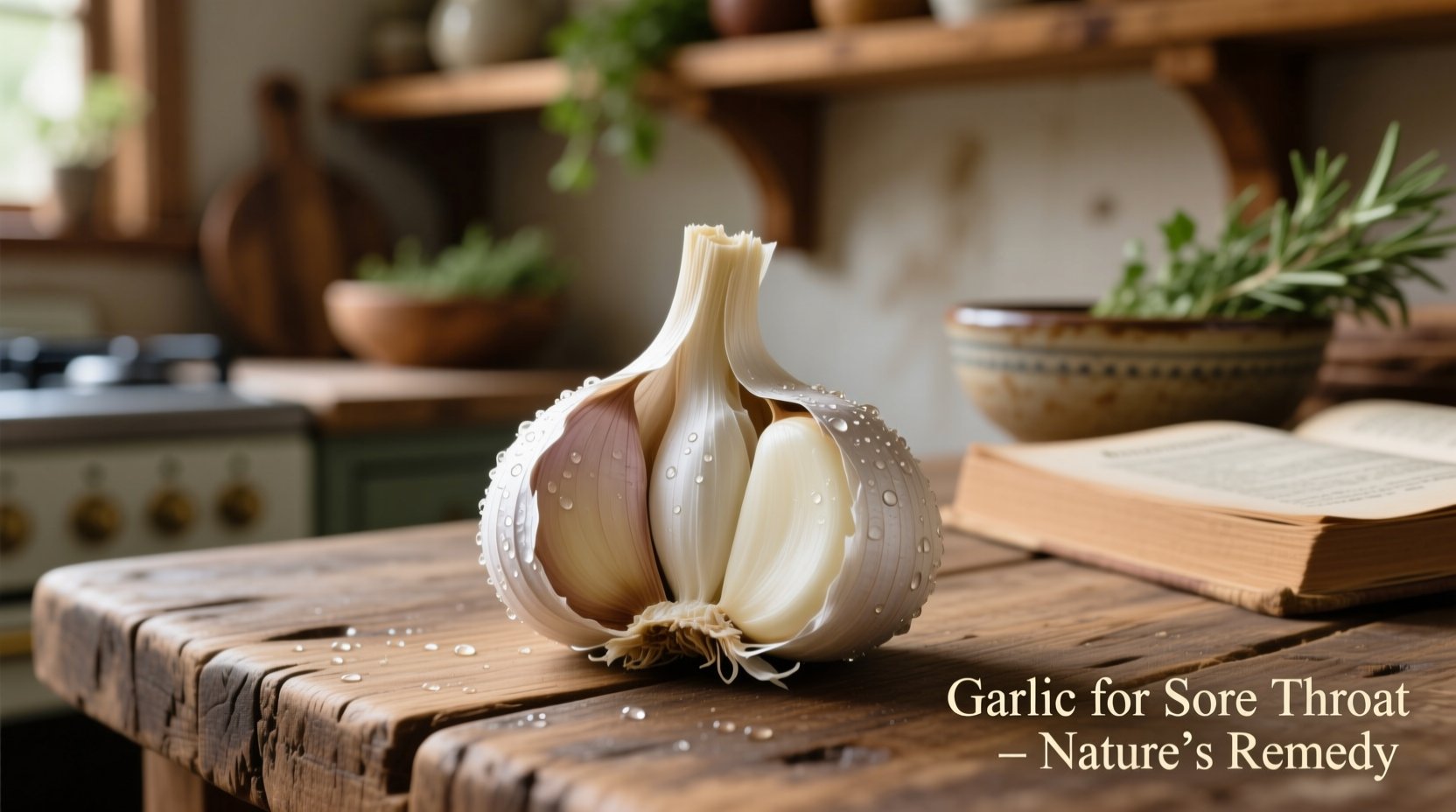Yes, garlic may provide some relief for sore throats due to its natural antimicrobial and anti-inflammatory properties, but it's not a cure-all. Research shows allicin, garlic's active compound, can combat bacteria and viruses that cause throat infections. For best results, use raw crushed garlic in honey or tea, but consult a doctor if symptoms persist beyond 48 hours or include high fever.
When that familiar scratchy sensation hits your throat, you're probably searching for fast, natural relief. As a culinary historian who's traced garlic's medicinal journey from ancient apothecaries to modern kitchens, I've seen how this pungent bulb has stood the test of time as a home remedy. While garlic won't replace antibiotics for bacterial infections like strep throat, understanding its proper application can make it a valuable addition to your sore throat toolkit.
The Science Behind Garlic's Sore Throat Relief
Garlic's effectiveness against sore throats primarily comes from allicin, the compound formed when you crush or chop raw garlic. This sulfur-containing substance demonstrates significant antimicrobial activity against both bacteria and viruses—the very pathogens responsible for most sore throats. According to research published in the Journal of Antimicrobial Chemotherapy, allicin disrupts microbial enzyme systems, potentially reducing the duration of throat infections.
Unlike many over-the-counter remedies that merely mask symptoms, garlic works at the source. A 2016 review in Advances in Therapy examined garlic's role in preventing and treating upper respiratory infections, finding that regular garlic consumption reduced both the incidence and duration of colds—which often include sore throats as a symptom.

How to Use Garlic Effectively for Sore Throat
Not all garlic preparations deliver equal benefits. To maximize allicin production—the key therapeutic compound—follow these evidence-based methods:
Raw Garlic Honey Infusion
Crush one fresh garlic clove and let it sit for 10 minutes (this activates allicin formation), then mix with one tablespoon of raw honey. Take this mixture every 3-4 hours. The honey soothes irritated tissues while delivering garlic's active compounds directly to your throat.
Garlic Tea Preparation
Simmer 2-3 crushed garlic cloves in 8 ounces of water for 10-15 minutes. Strain and add lemon juice and honey to taste. Drink 2-3 times daily. Avoid boiling garlic vigorously, as high heat destroys allicin.
| Remedy | Time to Relief | Scientific Support | Best For |
|---|---|---|---|
| Garlic Honey | 24-48 hours | Moderate | Early-stage viral infections |
| Salt Water Gargle | Immediate (temporary) | Strong | Symptom relief |
| OTC Pain Relievers | 30-60 minutes | Strong | Pain management |
| Antibiotics | 48-72 hours | Strong (for bacterial) | Strep throat |
When Garlic Works—and When It Doesn't
Understanding garlic's limitations is as important as knowing its benefits. Garlic shows most promise during the early stages of viral infections, which account for 85-90% of sore throats. However, it won't treat bacterial infections like strep throat, which require antibiotics. The Centers for Disease Control and Prevention (CDC) recommends seeking medical attention if you experience:
- Fever above 101°F (38.3°C)
- Difficulty swallowing or breathing
- Symptoms lasting longer than 48-72 hours
- White patches on tonsils
Garlic's effectiveness also depends on preparation method. Cooked garlic loses much of its medicinal potency, as heat destroys allicin. For therapeutic benefits, always use raw, freshly crushed garlic allowed to sit for 10 minutes before consumption.
Safety Considerations and Potential Side Effects
While generally safe, garlic remedies can cause issues for some people. Raw garlic may irritate sensitive stomachs or cause heartburn. Those taking blood thinners should consult their doctor before using therapeutic amounts of garlic, as it can enhance blood-thinning effects. The National Center for Complementary and Integrative Health notes that garlic supplements can interact with certain medications, including HIV drugs and some birth control pills.
Children under 2 should not consume raw garlic due to choking risk and potential digestive irritation. For older children, reduce the garlic quantity by half and always mix with honey or another carrier.
Garlic's Historical Journey as a Throat Remedy
Garlic's use as a medicinal plant spans millennia. Ancient Egyptian medical texts from 1550 BCE document garlic's use for treating infections. Greek athletes consumed garlic before competitions to boost endurance, while Roman soldiers used it to prevent infections from battle wounds. During World War I, when antibiotics were unavailable, garlic served as an antiseptic for treating infected wounds—a practice documented by the Royal Army Medical Corps.
This historical context matters because it shows how traditional knowledge often precedes scientific validation. Modern research continues to confirm what ancient healers observed empirically—that garlic possesses genuine antimicrobial properties that can support throat health when used appropriately.
Integrating Garlic into Your Sore Throat Care Plan
For optimal results, combine garlic with other evidence-based remedies:
- Hydration: Drink plenty of warm fluids to keep throat tissues moist
- Rest: Allow your immune system to focus on fighting infection
- Honey: Combines well with garlic and independently soothes throat irritation
- Humidifier: Moist air reduces throat dryness, especially at night
Remember that garlic works best as part of a comprehensive approach to throat health, not as a standalone solution. Its true value lies in supporting your body's natural healing processes during the early stages of infection.











 浙公网安备
33010002000092号
浙公网安备
33010002000092号 浙B2-20120091-4
浙B2-20120091-4